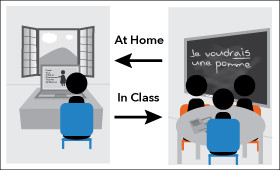Let’s Talk Sales Strategy: How to Sell Smarter, Not Harder
You’ve got a solid product or service. You know your industry. You’ve built a team that’s ready to roll.
But here’s the thing—none of that really moves the needle without a clear, effective sales strategy in place.
In today’s fast-paced, competitive world, winging it just doesn’t cut it. You need a plan. One that’s smart, scalable, and actually gets results.
That’s where sales strategy development makes all the difference.
I work with founders, entrepreneurs, and business leaders to create sales strategies that don’t just sound good—but actually work in the real world. No fluff. No jargon. Just practical steps that drive growth.
This guide breaks it all down. Ready? Let’s go.
So, What Exactly Is a Sales Strategy?
Think of your sales strategy like your GPS. It takes you from “Hey, we’ve got a product” to “We’re closing deals and scaling consistently.”
It helps you answer key questions like:
- Who are we actually selling to?
- What message are we putting out there?
- How do we find leads and move them through the funnel?
- What tools should we be using?
- And how do we know if any of it’s working?
Without that clarity, your team ends up guessing—and guessing gets expensive.
Why You Can’t Skip the Strategy Step
Too many businesses rely on what I call “hope-based selling.” They lean on one or two high-performers and hope it all works out. And it might—for a while. But it’s not sustainable.
Here’s what real sales strategy development gives you:
✅ Clarity – Everyone knows their role and what success looks like
✅ Consistency – Your message and process stay sharp
✅ Confidence – You know what’s working (and what’s not)
✅ Momentum – You’re not just closing deals, you’re building something
Building Blocks of a Strategy That Actually Works
Here’s what you need to lock in for a rock-solid sales foundation:
- Know Who You’re Talking To
Start with your Ideal Customer Profile (ICP). These are your best-fit clients—the ones who “get it” right away.
Ask yourself:
- What industry are they in?
- How big is their business?
- What are their pain points?
- Who’s making the buying decisions?
🎯 Quick tip: Build detailed buyer personas. The more specific, the better your targeting.
- Understand the Buyer’s Journey
Today’s buyers do their homework. By the time they talk to your team, they’ve already Googled you and checked out the competition.
There are three key stages:
- Awareness – “I think I have a problem.”
- Consideration – “What are my options?”
- Decision – “Who should I choose?”
Your goal is to meet them where they are and offer value—not just pitch.
- Set Real, Actionable Goals
“Sell more” isn’t a strategy—it’s a wish.
Use the SMART framework:
- Specific
- Measurable
- Achievable
- Relevant
- Time-bound
📌 Example: “Close 20 new deals worth $5K+ in Q2.”
Now that’s something your team can aim for.
- Choose the Right Sales Model
Not every business should sell the same way. Your approach depends on your product, industry, and customer base.
Are you B2B or B2C?
Is your strategy inbound (they find you) or outbound (you go to them)?
Do you rely on quick sales or long, consultative cycles?
A strong sales strategy development process will help you choose the best model—and build around it.
- Build a Playbook Your Team Actually Uses
A great playbook acts like a GPS for your reps.
Include:
- Who you’re targeting (ICP)
- Messaging and talk tracks
- Email and call templates
- Objection-handling tips
- CRM processes
- Qualification frameworks (like BANT or MEDDIC)
Make it easy to use—and easy to update.
- Set Up the Right Tools
Your tech stack should work for you, not against you.
Popular options:
- CRMs: HubSpot, Salesforce, Zoho
- Email tools: Mailchimp, Lemlist
- Lead gen: Apollo, LinkedIn Sales Navigator
- Analytics: Google Data Studio, Tableau
The right tools support your strategy—not the other way around.
- Build a Full-Funnel Sales Team
Here’s a simple, effective team structure:
- SDRs (Sales Development Reps): Prospect and qualify leads
- AEs (Account Executives): Handle demos and close deals
- CSMs (Customer Success Managers): Keep clients happy and help them grow
Clear roles = less confusion, more results.
- Measure What Matters
Don’t track everything—just what tells you whether your strategy’s working:
- Lead-to-opportunity conversion
- Sales cycle length
- Win rate
- Average deal size
- Revenue per rep
- Churn rate
Build a simple dashboard. Keep it visible. Keep it real.
Don’t Skip the Human Side
Even the best strategy won’t work if your people aren’t confident.
Ongoing training makes a difference:
- Weekly call reviews
- Objection-handling roleplay
- Peer coaching
- Bite-sized workshops
Sales is a skill—and like any skill, it gets better with practice.
Sales + Marketing = One Team
Sales and marketing shouldn’t be in silos. When they work together, great things happen.
Look for:
- Shared messaging
- Co-created campaigns
- Unified lead scoring
- CRM systems that talk to each other
Alignment means more leads close faster.
Keep Improving
A great sales strategy isn’t “set it and forget it.” It should evolve as your business grows.
Ask regularly:
- What’s the team saying?
- Why are we losing certain deals?
- What’s actually working better than expected?
The businesses that win long-term are the ones that learn fast and adjust faster.
Signs It’s Time for a Strategy Tune-Up
Be honest—do any of these sound familiar?
- Your revenue’s flatlined
- Your pipeline looks full, but deals aren’t closing
- Sales cycles are dragging
- Your team’s unclear or unmotivated
- Marketing and sales keep pointing fingers
If so, it might be time to revisit your sales strategy development process. A quick audit can reveal a lot.
How I Can Help
Whether you’re a startup, scaling business, or a more established team, I can help you build a system that works.
Here’s what I bring:
- Clean, effective sales funnels
- Sales playbooks that people actually use
- Tools that simplify, not complicate
- Coaching that builds real confidence
- Forecasting that’s rooted in reality
- A strategy you can actually follow
Let’s build something that lasts.
Final Thoughts
Look—sales is tough. But with the right strategy in place, it doesn’t have to feel like you’re guessing every day.
If your team’s spinning its wheels, let’s change that.
Start by asking:
“Do we have a strategy that’s helping us grow—or are we just getting by?”
If you’re ready for clarity, structure, and growth—you know where to start. Let’s talk.





